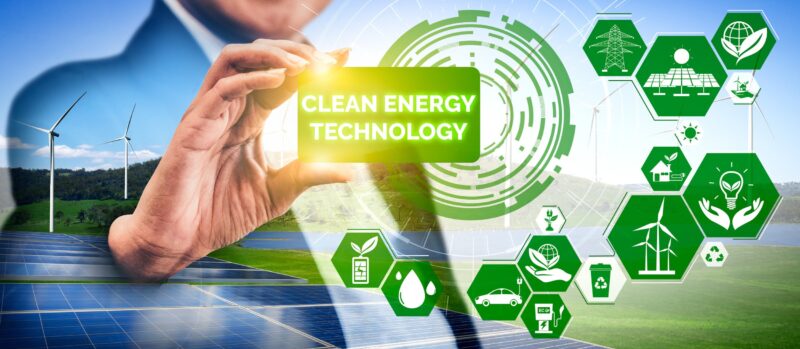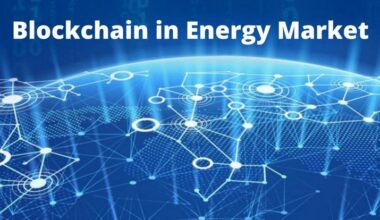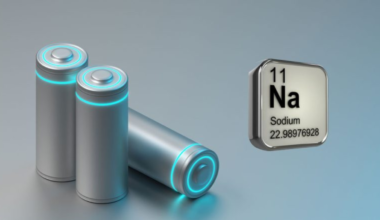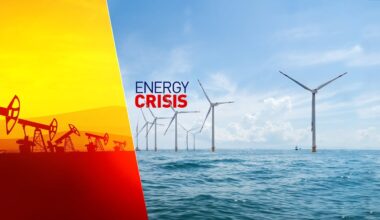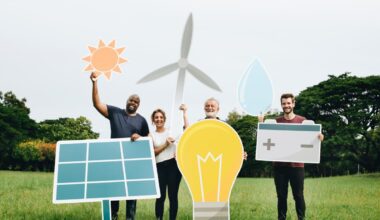How AI is Revolutionizing Renewable Energy: Top Innovations Transforming the Industry
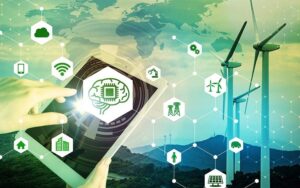
Introduction: The Fusion of AI and Renewable Energy
In today’s world, renewable energy is seen as the key to solving the global energy crisis and mitigating climate change. However, as demand for renewable energy sources increases, so does the need for smarter, more efficient technologies to manage and optimize energy production, storage, and consumption. Enter Artificial Intelligence —a game-changer that is reshaping how we generate, manage, and distribute clean energy.
Artificial intelligence is transforming the renewable energy sector by bringing innovative solutions to age-old challenges. From solar panels and wind turbines to energy storage systems and smart grids, AI is streamlining operations, enhancing efficiency, and enabling a more sustainable future.
This post dives deep into how Artificial intelligence is revolutionizing the renewable energy industry, with a special focus on the top innovations that are shaping the future of clean energy. If you’re interested in understanding how Artificial intelligence is making renewable energy more efficient, cost-effective, and accessible, this article is for you.
What is Artificial Intelligence?
Before we explore how AI is revolutionizing renewable energy, let’s briefly define what AI is.
AI refers to the simulation of human intelligence in machines that are programmed to think and act like humans. This includes the ability to learn, reason, and problem-solve. AI systems use algorithms and vast amounts of data to improve their performance over time without needing explicit programming for each task. In renewable energy, Artificial intelligence is leveraged to predict trends, optimize systems, and automate processes to enhance efficiency and reduce waste.
Read Also: Top 10 Best Solar Batteries Currently in the Market
How AI is Revolutionizing the Renewable Energy Industry
1. Optimizing Energy Production in Solar Power
Artificial intelligence plays a pivotal role in improving the efficiency of solar energy systems, which are key to the global shift toward clean energy. Solar panels have long been recognized as a sustainable energy source, but their energy output can be affected by factors such as weather patterns, geographic location, and shading.
AI in Solar Panel Efficiency
AI-powered systems can predict energy output based on environmental factors. By using machine learning algorithms, these systems can adjust panel configurations to optimize sunlight absorption, leading to higher energy production.
Example: Companies like Google’s DeepMind are working on Artificial intelligence technologies that can predict cloud movements and adjust the angle of solar panels in real time. This allows for the optimization of energy production even under varying weather conditions.
AI in Predictive Maintenance for Solar Panels
Another key area where Artificial intelligence is making an impact is in predictive maintenance. Solar panels are susceptible to damage due to environmental factors like hail or dust buildup. AI-enabled systems can monitor the health of the solar panels and identify issues before they lead to downtime, ensuring continuous energy production.
Monetization Opportunity: Affiliate links to solar panel maintenance services or solar energy system providers can be inserted here, driving revenue through referral traffic.
2. Enhancing Wind Energy Performance with AI
Like solar energy, wind energy is one of the leading renewable energy sources worldwide. However, the performance of wind turbines can vary based on wind speeds, turbine condition, and location.
AI in Wind Turbine Optimization
Artificial intelligence can analyze weather data, wind patterns, and turbine performance to determine the optimal settings for each turbine. By continuously learning from these data points, Artificial intelligence can predict when and how turbines should adjust their blades to maximize efficiency and reduce wear and tear.
Example: GE Renewable Energy has developed AI-powered systems that can optimize wind turbine performance by predicting the best turbine operation mode based on real-time data. This helps to improve the overall energy output and extend the lifespan of the turbines.
Artificial intelligence for Wind Farm Planning
Artificial intelligence can also play a critical role in the placement of wind turbines. By analyzing vast amounts of meteorological and geographical data, AI can help identify optimal locations for wind farms. This increases energy output while reducing the costs associated with inefficient land use.
3. AI in Energy Storage: Powering the Future of Batteries
While renewable energy sources like solar and wind are abundant, one of their key challenges is intermittency—they do not produce energy consistently. This is where Artificial intelligence comes into play to solve the issue of energy storage.
AI in Battery Storage Systems
Artificial intelligence can optimize how batteries store and release energy, making them more efficient and cost-effective. By using Artificial intelligence, energy storage systems can learn when to charge and when to discharge, ensuring that energy is used when it is needed most.
Example: Tesla’s Powerwall uses Artificial intelligence to optimize the energy storage and release process in residential settings. Artificial intelligence helps determine the best times to use stored energy, making the system more efficient and reducing reliance on the grid.
Affiliate Opportunity: Insert affiliate links to smart energy storage systems, battery suppliers, and home energy products.
4. Smart Grids and AI: A New Era of Energy Distribution

One of the most significant advancements in the renewable energy space is the development of smart grids. These advanced electrical grids use Artificial intelligence to efficiently distribute energy across regions based on demand, availability, and supply.
AI-Powered Energy Distribution
Artificial intelligence in smart grids allows for real-time monitoring of energy consumption across various regions, ensuring that energy is distributed where it is needed most. Artificial intelligence systems can predict energy demand patterns and adjust the supply accordingly, preventing blackouts and optimizing resource usage.
Example: In cities like Los Angeles, Artificial intelligence is being used to improve the management of solar power in smart grids. By using Artificial intelligence to predict energy demand, the city can balance solar energy supply with grid demand, leading to increased efficiency and reduced energy waste.
Step-by-Step Process: How AI Transforms Renewable Energy Systems
- Data Collection: The first step is collecting data from sensors embedded in solar panels, wind turbines, and energy storage systems. This data could include weather patterns, energy consumption, battery levels, and more.
- Data Processing: The data is then processed through machine learning algorithms to identify trends, patterns, and correlations that can help optimize energy production and distribution.
- Optimization: Once Artificial intelligence systems understand the data, they can make real-time decisions to optimize energy production, storage, and distribution. This may involve adjusting solar panel angles, changing wind turbine speeds, or determining when to release stored energy.
- Continuous Learning: As Artificial intelligence systems gather more data over time, they learn from past experiences, becoming smarter and more efficient in managing energy resources.
Frequently Asked Questions (FAQs)
1. How does Artificial intelligence help in reducing the cost of renewable energy?
Artificial intelligence reduces the cost of renewable energy by improving efficiency, lowering maintenance costs, and reducing energy waste. It helps optimize the use of resources, reducing the need for expensive manual interventions and improving the return on investment for renewable energy projects.
2. Is Artificial intelligence used for renewable energy in residential homes?
Yes! Artificial intelligence is being used in residential settings through smart home systems, energy management platforms, and solar panel optimization systems. These technologies help homeowners reduce energy consumption and save money by managing their renewable energy sources efficiently.
3. How does Artificial intelligence impact the reliability of renewable energy sources?
Artificial intelligence improves the reliability of renewable energy by predicting energy demand and adjusting supply in real-time. It also enhances the predictive maintenance of renewable energy systems, ensuring they are operating optimally and minimizing downtime.
4. What is the future of Artificial intelligence in renewable energy?
The future of Artificial intelligence in renewable energy is promising, with continued advancements in energy storage, smart grids, and sustainability. As Artificial intelligence technology improves, it will play an even larger role in managing the transition to cleaner, more efficient energy systems worldwide.
Conclusion: A Smarter, Greener Future
Artificial intelligence is undoubtedly transforming the renewable energy landscape. Through innovations in solar, wind, energy storage, and smart grids, Artificial intelligence is not only enhancing efficiency but also driving down costs, improving reliability, and accelerating the global shift toward sustainable energy.
As the world continues to embrace Artificial intelligence in the renewable energy sector, we can expect even more groundbreaking innovations that will change how we generate, store, and use clean energy. If you’re interested in adopting AI-powered renewable energy systems, the future looks brighter than ever.
Maximizing Your Energy Efficiency: Start Today
If you’re looking to implement AI-powered renewable energy solutions for your home or business, consider exploring some of the leading technologies discussed above. Whether it’s solar panel optimization, battery storage systems, or smart grid solutions, the right technology can help you achieve sustainability goals while lowering your energy bills.
